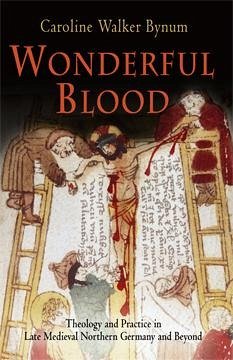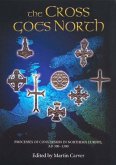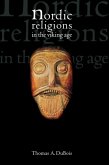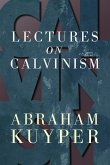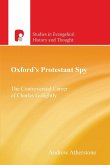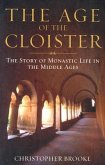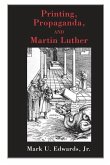Caroline Walker Bynum
Wonderful Blood
Theology and Practice in Late Medieval Northern Germany and Beyond
Caroline Walker Bynum
Wonderful Blood
Theology and Practice in Late Medieval Northern Germany and Beyond
- Broschiertes Buch
- Merkliste
- Auf die Merkliste
- Bewerten Bewerten
- Teilen
- Produkt teilen
- Produkterinnerung
- Produkterinnerung
Bynum argues that Christ's blood as both object and symbol was central to late medieval art, literature, and religious life. As cult object, blood provided a focus of theological debate about the nature of matter, body, and God and an occasion for Jewish persecution; as motif, blood became a central symbol in popular devotion.
Andere Kunden interessierten sich auch für
![The Cross Goes North The Cross Goes North]() Martin Carver (ed.)The Cross Goes North53,99 €
Martin Carver (ed.)The Cross Goes North53,99 €![Nordic Religions in the Viking Age Nordic Religions in the Viking Age]() Thomas DuBoisNordic Religions in the Viking Age30,99 €
Thomas DuBoisNordic Religions in the Viking Age30,99 €![The Monastic Ritual of Fleury The Monastic Ritual of Fleury]() The Monastic Ritual of Fleury79,99 €
The Monastic Ritual of Fleury79,99 €![Lectures on Calvinism Lectures on Calvinism]() Abraham KuyperLectures on Calvinism20,99 €
Abraham KuyperLectures on Calvinism20,99 €![Oxford's Protestant Spy Oxford's Protestant Spy]() Andrew AtherstoneOxford's Protestant Spy40,99 €
Andrew AtherstoneOxford's Protestant Spy40,99 €![Age of the Cloister Age of the Cloister]() Christopher BrookeAge of the Cloister18,99 €
Christopher BrookeAge of the Cloister18,99 €![Printing, Propaganda, and Martin Luther Printing, Propaganda, and Martin Luther]() Printing, Propaganda, and Martin Luther31,99 €
Printing, Propaganda, and Martin Luther31,99 €-
-
-
Bynum argues that Christ's blood as both object and symbol was central to late medieval art, literature, and religious life. As cult object, blood provided a focus of theological debate about the nature of matter, body, and God and an occasion for Jewish persecution; as motif, blood became a central symbol in popular devotion.
Hinweis: Dieser Artikel kann nur an eine deutsche Lieferadresse ausgeliefert werden.
Hinweis: Dieser Artikel kann nur an eine deutsche Lieferadresse ausgeliefert werden.
Produktdetails
- Produktdetails
- Verlag: University of Pennsylvania Press
- Seitenzahl: 456
- Erscheinungstermin: 5. November 2007
- Englisch
- Abmessung: 230mm x 154mm x 27mm
- Gewicht: 744g
- ISBN-13: 9780812220193
- ISBN-10: 0812220196
- Artikelnr.: 23431464
- Herstellerkennzeichnung
- Libri GmbH
- Europaallee 1
- 36244 Bad Hersfeld
- gpsr@libri.de
- Verlag: University of Pennsylvania Press
- Seitenzahl: 456
- Erscheinungstermin: 5. November 2007
- Englisch
- Abmessung: 230mm x 154mm x 27mm
- Gewicht: 744g
- ISBN-13: 9780812220193
- ISBN-10: 0812220196
- Artikelnr.: 23431464
- Herstellerkennzeichnung
- Libri GmbH
- Europaallee 1
- 36244 Bad Hersfeld
- gpsr@libri.de
By Caroline Walker Bynum
List of Illustrations
Preface
Some Notes on Usage
Chapter 1. Introduction: A Frenzy for Blood
—The Emergence of Blood Piety
—Blood in the Fifteenth-Century North
—Some Recent Approaches
PART I. CULTS IN NORTHERN GERMANY
Chapter 2. Wilsnack
—The Events
—Historiography
—Blood at the Center
—Treatises de Sanguine
—Larger Questions
Chapter 3. Cults in Mecklenburg and the Mark Brandenburg
—Historiography and the Problem of the Evidence
—Blood Cult in Middle Germany and the Havelland
—North and West of Wilsnack
—Anti-Jewish Libels Circa 1500: Sternberg and Berlin
—The Fate of Cults in the Sixteenth-Century North
—Holy Matter and the Jews
PART II. BLOOD DISPUTES IN FIFTEENTH-CENTURY EUROPE AND THEIR BACKGROUND
Chapter 4. Debates About Eucharistic Transformations and Blood Relics
—Visions and Transformations
—The Practical Issue of Transformed Hosts
—Concomitance and the Cup
—The Debate over Blood Relics: Background
—Grosseteste, Bonaventure, and Aquinas on Blood Relics and Identity
—Gerhard of Cologne
—Discussions of Blood Relics in the Fifteenth Century
Chapter 5. Christ's Blood in the Triduum Mortis
—Mayronis and the Barcelona Controversy of 1350-51
—John of Capistrano on the Precious Blood
—The Triduum Mortis Debate of 1462-64
—Some Arguments Attributed to Nicholas of Cusa
—Patterns in Dominican and Franciscan Theology
—Conclusion
PART III. THE ASSUMPTIONS OF BLOOD PIETY
Chapter 6. A Concern for Immutability
—The Immutability Theme at Wilsnack
—The Transformed-Hosts Debate: A Deeper Issue
—Immutability in Debates over Blood Relics and Treatises de Sanguine
—Wholeness and Immutability in Story and Cult
—Devotional Images
—Conclusion
Chapter 7. Living Blood Poured Out
—Blood as Fertility
—Blood as Social Survival
—Blood as Engendering and Gendered
—Blood as Sedes Animae
—Continuity in Discontinuity: The Exsanguination of Christ
—Blood as Alive
Chapter 8. Blood as Separated and Shed
—The Stress on Separation
—Blood as Drops
—The Revelation of the Hundred Pater Nosters
—Accusation and Reproach
—Blood as Symbol
—The Deeper Paradox: Sacrifice
PART IV. SACRIFICE AND SOTERIOLOGY
Chapter 9. Late Medieval Soteriology
—Salvation as Satisfaction and Response: The Conventional Account
—Salvation as Participation
—Julian of Norwich
—Conclusion
Chapter 10. Sacrificial Theology
—The Biblical and Patristic Background
—Destruction and Oblation
—Sacrifice in Blood Cult and Controversy
—The Sixteenth Century
Chapter 11. The Aporia of Sacrifice
—Questioning Blood: The Meditations on the Life of Christ
—Avoiding Sacrifice
—Who Sacrifices? Including/Excluding Christians and Blaming Jews
—Sacrifice and the Marking of Matter
Chapter 12. Conclusion: Why Blood?
List of Abbreviations
Notes
Bibliography of Works Cited
Index
Acknowledgments
Preface
Some Notes on Usage
Chapter 1. Introduction: A Frenzy for Blood
—The Emergence of Blood Piety
—Blood in the Fifteenth-Century North
—Some Recent Approaches
PART I. CULTS IN NORTHERN GERMANY
Chapter 2. Wilsnack
—The Events
—Historiography
—Blood at the Center
—Treatises de Sanguine
—Larger Questions
Chapter 3. Cults in Mecklenburg and the Mark Brandenburg
—Historiography and the Problem of the Evidence
—Blood Cult in Middle Germany and the Havelland
—North and West of Wilsnack
—Anti-Jewish Libels Circa 1500: Sternberg and Berlin
—The Fate of Cults in the Sixteenth-Century North
—Holy Matter and the Jews
PART II. BLOOD DISPUTES IN FIFTEENTH-CENTURY EUROPE AND THEIR BACKGROUND
Chapter 4. Debates About Eucharistic Transformations and Blood Relics
—Visions and Transformations
—The Practical Issue of Transformed Hosts
—Concomitance and the Cup
—The Debate over Blood Relics: Background
—Grosseteste, Bonaventure, and Aquinas on Blood Relics and Identity
—Gerhard of Cologne
—Discussions of Blood Relics in the Fifteenth Century
Chapter 5. Christ's Blood in the Triduum Mortis
—Mayronis and the Barcelona Controversy of 1350-51
—John of Capistrano on the Precious Blood
—The Triduum Mortis Debate of 1462-64
—Some Arguments Attributed to Nicholas of Cusa
—Patterns in Dominican and Franciscan Theology
—Conclusion
PART III. THE ASSUMPTIONS OF BLOOD PIETY
Chapter 6. A Concern for Immutability
—The Immutability Theme at Wilsnack
—The Transformed-Hosts Debate: A Deeper Issue
—Immutability in Debates over Blood Relics and Treatises de Sanguine
—Wholeness and Immutability in Story and Cult
—Devotional Images
—Conclusion
Chapter 7. Living Blood Poured Out
—Blood as Fertility
—Blood as Social Survival
—Blood as Engendering and Gendered
—Blood as Sedes Animae
—Continuity in Discontinuity: The Exsanguination of Christ
—Blood as Alive
Chapter 8. Blood as Separated and Shed
—The Stress on Separation
—Blood as Drops
—The Revelation of the Hundred Pater Nosters
—Accusation and Reproach
—Blood as Symbol
—The Deeper Paradox: Sacrifice
PART IV. SACRIFICE AND SOTERIOLOGY
Chapter 9. Late Medieval Soteriology
—Salvation as Satisfaction and Response: The Conventional Account
—Salvation as Participation
—Julian of Norwich
—Conclusion
Chapter 10. Sacrificial Theology
—The Biblical and Patristic Background
—Destruction and Oblation
—Sacrifice in Blood Cult and Controversy
—The Sixteenth Century
Chapter 11. The Aporia of Sacrifice
—Questioning Blood: The Meditations on the Life of Christ
—Avoiding Sacrifice
—Who Sacrifices? Including/Excluding Christians and Blaming Jews
—Sacrifice and the Marking of Matter
Chapter 12. Conclusion: Why Blood?
List of Abbreviations
Notes
Bibliography of Works Cited
Index
Acknowledgments
List of Illustrations
Preface
Some Notes on Usage
Chapter 1. Introduction: A Frenzy for Blood
—The Emergence of Blood Piety
—Blood in the Fifteenth-Century North
—Some Recent Approaches
PART I. CULTS IN NORTHERN GERMANY
Chapter 2. Wilsnack
—The Events
—Historiography
—Blood at the Center
—Treatises de Sanguine
—Larger Questions
Chapter 3. Cults in Mecklenburg and the Mark Brandenburg
—Historiography and the Problem of the Evidence
—Blood Cult in Middle Germany and the Havelland
—North and West of Wilsnack
—Anti-Jewish Libels Circa 1500: Sternberg and Berlin
—The Fate of Cults in the Sixteenth-Century North
—Holy Matter and the Jews
PART II. BLOOD DISPUTES IN FIFTEENTH-CENTURY EUROPE AND THEIR BACKGROUND
Chapter 4. Debates About Eucharistic Transformations and Blood Relics
—Visions and Transformations
—The Practical Issue of Transformed Hosts
—Concomitance and the Cup
—The Debate over Blood Relics: Background
—Grosseteste, Bonaventure, and Aquinas on Blood Relics and Identity
—Gerhard of Cologne
—Discussions of Blood Relics in the Fifteenth Century
Chapter 5. Christ's Blood in the Triduum Mortis
—Mayronis and the Barcelona Controversy of 1350-51
—John of Capistrano on the Precious Blood
—The Triduum Mortis Debate of 1462-64
—Some Arguments Attributed to Nicholas of Cusa
—Patterns in Dominican and Franciscan Theology
—Conclusion
PART III. THE ASSUMPTIONS OF BLOOD PIETY
Chapter 6. A Concern for Immutability
—The Immutability Theme at Wilsnack
—The Transformed-Hosts Debate: A Deeper Issue
—Immutability in Debates over Blood Relics and Treatises de Sanguine
—Wholeness and Immutability in Story and Cult
—Devotional Images
—Conclusion
Chapter 7. Living Blood Poured Out
—Blood as Fertility
—Blood as Social Survival
—Blood as Engendering and Gendered
—Blood as Sedes Animae
—Continuity in Discontinuity: The Exsanguination of Christ
—Blood as Alive
Chapter 8. Blood as Separated and Shed
—The Stress on Separation
—Blood as Drops
—The Revelation of the Hundred Pater Nosters
—Accusation and Reproach
—Blood as Symbol
—The Deeper Paradox: Sacrifice
PART IV. SACRIFICE AND SOTERIOLOGY
Chapter 9. Late Medieval Soteriology
—Salvation as Satisfaction and Response: The Conventional Account
—Salvation as Participation
—Julian of Norwich
—Conclusion
Chapter 10. Sacrificial Theology
—The Biblical and Patristic Background
—Destruction and Oblation
—Sacrifice in Blood Cult and Controversy
—The Sixteenth Century
Chapter 11. The Aporia of Sacrifice
—Questioning Blood: The Meditations on the Life of Christ
—Avoiding Sacrifice
—Who Sacrifices? Including/Excluding Christians and Blaming Jews
—Sacrifice and the Marking of Matter
Chapter 12. Conclusion: Why Blood?
List of Abbreviations
Notes
Bibliography of Works Cited
Index
Acknowledgments
Preface
Some Notes on Usage
Chapter 1. Introduction: A Frenzy for Blood
—The Emergence of Blood Piety
—Blood in the Fifteenth-Century North
—Some Recent Approaches
PART I. CULTS IN NORTHERN GERMANY
Chapter 2. Wilsnack
—The Events
—Historiography
—Blood at the Center
—Treatises de Sanguine
—Larger Questions
Chapter 3. Cults in Mecklenburg and the Mark Brandenburg
—Historiography and the Problem of the Evidence
—Blood Cult in Middle Germany and the Havelland
—North and West of Wilsnack
—Anti-Jewish Libels Circa 1500: Sternberg and Berlin
—The Fate of Cults in the Sixteenth-Century North
—Holy Matter and the Jews
PART II. BLOOD DISPUTES IN FIFTEENTH-CENTURY EUROPE AND THEIR BACKGROUND
Chapter 4. Debates About Eucharistic Transformations and Blood Relics
—Visions and Transformations
—The Practical Issue of Transformed Hosts
—Concomitance and the Cup
—The Debate over Blood Relics: Background
—Grosseteste, Bonaventure, and Aquinas on Blood Relics and Identity
—Gerhard of Cologne
—Discussions of Blood Relics in the Fifteenth Century
Chapter 5. Christ's Blood in the Triduum Mortis
—Mayronis and the Barcelona Controversy of 1350-51
—John of Capistrano on the Precious Blood
—The Triduum Mortis Debate of 1462-64
—Some Arguments Attributed to Nicholas of Cusa
—Patterns in Dominican and Franciscan Theology
—Conclusion
PART III. THE ASSUMPTIONS OF BLOOD PIETY
Chapter 6. A Concern for Immutability
—The Immutability Theme at Wilsnack
—The Transformed-Hosts Debate: A Deeper Issue
—Immutability in Debates over Blood Relics and Treatises de Sanguine
—Wholeness and Immutability in Story and Cult
—Devotional Images
—Conclusion
Chapter 7. Living Blood Poured Out
—Blood as Fertility
—Blood as Social Survival
—Blood as Engendering and Gendered
—Blood as Sedes Animae
—Continuity in Discontinuity: The Exsanguination of Christ
—Blood as Alive
Chapter 8. Blood as Separated and Shed
—The Stress on Separation
—Blood as Drops
—The Revelation of the Hundred Pater Nosters
—Accusation and Reproach
—Blood as Symbol
—The Deeper Paradox: Sacrifice
PART IV. SACRIFICE AND SOTERIOLOGY
Chapter 9. Late Medieval Soteriology
—Salvation as Satisfaction and Response: The Conventional Account
—Salvation as Participation
—Julian of Norwich
—Conclusion
Chapter 10. Sacrificial Theology
—The Biblical and Patristic Background
—Destruction and Oblation
—Sacrifice in Blood Cult and Controversy
—The Sixteenth Century
Chapter 11. The Aporia of Sacrifice
—Questioning Blood: The Meditations on the Life of Christ
—Avoiding Sacrifice
—Who Sacrifices? Including/Excluding Christians and Blaming Jews
—Sacrifice and the Marking of Matter
Chapter 12. Conclusion: Why Blood?
List of Abbreviations
Notes
Bibliography of Works Cited
Index
Acknowledgments

